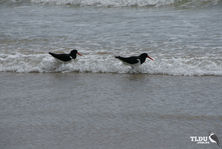
Shoppers Feedback:
Jan 17, 2017
Hello Ros,
I have now paid the invoice, but I would like to write to you just to say a big THANK YOU for getting me the Penguin!
The ChatterMate Penguin became a nice memory for me when I was in New Zealand, and I am so greatful to you for arranging so that I could have it! :-)
Thank you so much!!!!!!!!!!!
Regards,
Malin
Hi Ros,
Many thanks for your very kind email. I really appreciate your prompt reply!
I appreciate your advice regarding the decorations and customs. These are a gift for my daughter’s exchange student family so when she returns home on the weekend I will show her and see if she loves them as much as I do!
Thanks so very much again - I am truly grateful for your kind assistance.
Kind Regards
Bernadette
Ros,
Thanks again for the great customer service. It's a refreshing change!
Best regards,
Trevor
Hey Roz,
Thank you for your emails. Just loved my first order. The cute little Aussie bush critters are going to be used for an office Christmas decoration. My colleagues also liked them and talked about making an order to your site. I'll send you a photo when completed.
I'll be ordering more to send to my daughter's host family in America.
Fabulous service from you.
Kind regards,
Michelle
Thankyou. Order arrived today. One very happy grandson with his new beastly binoculars.
Regards,
Irene
- Home
- Wild Wonders
- Shop
- Aromas of Australia
- Australian Made
- Books
- Book Marks
- Christmas Decoration Sale
- Christmas Decorations
- Clocks
- Drink Holders
- Garden & Outdoor
- Gift Wrapping & Cards
- Home & Giftware
- Jewellery
- Keyrings
- New Products
- Pencils & Pen Holders
- Photo Frames
- Plush Toys
- Plush with Sound
- Sheepskin Rugs
- Stationery
- Stone Carvings
- Toys & Games
- Travel Goods
- Wedding
- Wild Figurines
- Wildlife Safety Products
- Wind Chimes
- Wine Charms
- View All Products
- Wildlife
- Australiana
- Explore
- Contact Us

Quick Facts
| Length: | - |
| Height: | 50 cm |
| Weight: | - |
| Colour: | Black with white breast and belly. Bright orange-red bill, eye rings and legs |
| Habitat: | Prefers mudflats, sandbanks and sandy ocean beaches |
| Food: | Molluscs, worms, crustaceans and insects |
| Predators: | - |
| Status: | Vulnerable in NSW. Secure in all other states and territories in Australia |
The Pied Oystercatcher is black with a white breast and belly. All oystercatchers have a bright orange-red bill, eye-rings and legs and a red eye. Young birds are similar in appearance to the adults, but lack the intense red-orange colours and are brown rather than black. The Pied Oystercatcher is shy of humans and seldom allows close approach.
The white breast and belly distinguish the Pied Oystercatcher from the closely related Sooty Oystercatcher, which has all black plumage.
The Pied Oystercatcher is found in coastal areas throughout the Australian continent except for areas of unbroken sea cliffs such as the Great Australian Bight. Pied Oystercatchers have probably declined throughout much of their range and the current population may be as low as 10,000. Closely related forms are found in almost every continent in the world.
The Pied Oystercatcher prefers mudflats, sandbanks and sandy ocean beaches and is less common along rocky or shingle coastlines. Although rarely recorded far from the coast, the Pied Oystercatcher may occasionally be found in estuarine mudflats and short pasture.
Oystercatchers feed on bivalve molluscs, which are prised apart with their specially adapted bills. Food is found by sight, or by probing their long, chisel-shaped bills in the mud. Young Pied Oystercatchers are one of the few waders that are fed by their parents using this specialised feeding technique. Worms, crustaceans and insects are also eaten.
The Pied Oystercatcher breeds in pairs. A breeding territory of some 200 m is formed and is defended by both birds. Nesting takes place on sand, shell grit or shingle just above high water mark on beaches, sandbars, margins of estuaries and lagoons. The eggs are well-camouflaged, being pale brown with darker brown and black blotches and streaks. Both sexes share parenting duties.
Last Updated: Wednesday 8th January, 2014
BirdLife Australia - www.birdlife.org.au
BUSH e-TELEGRAPH
Signup for our monthly newsletter the "e-Telegraph"
Quick Links
Home | The Beginning | About The Land Down Under | Wild Wonders | Advertise on Wild Wonders | Christmas Decoration Sale | Christmas Tree Decorations | Drink Holders | Plush with Sound | Stone Carvings | Wildlife Wine Charms | Freebies | Australian Wildlife | Help Our Wildlife | Australiana | Photo of the Month | Explore The Land Down Under | Contact Us | Legal Notices

